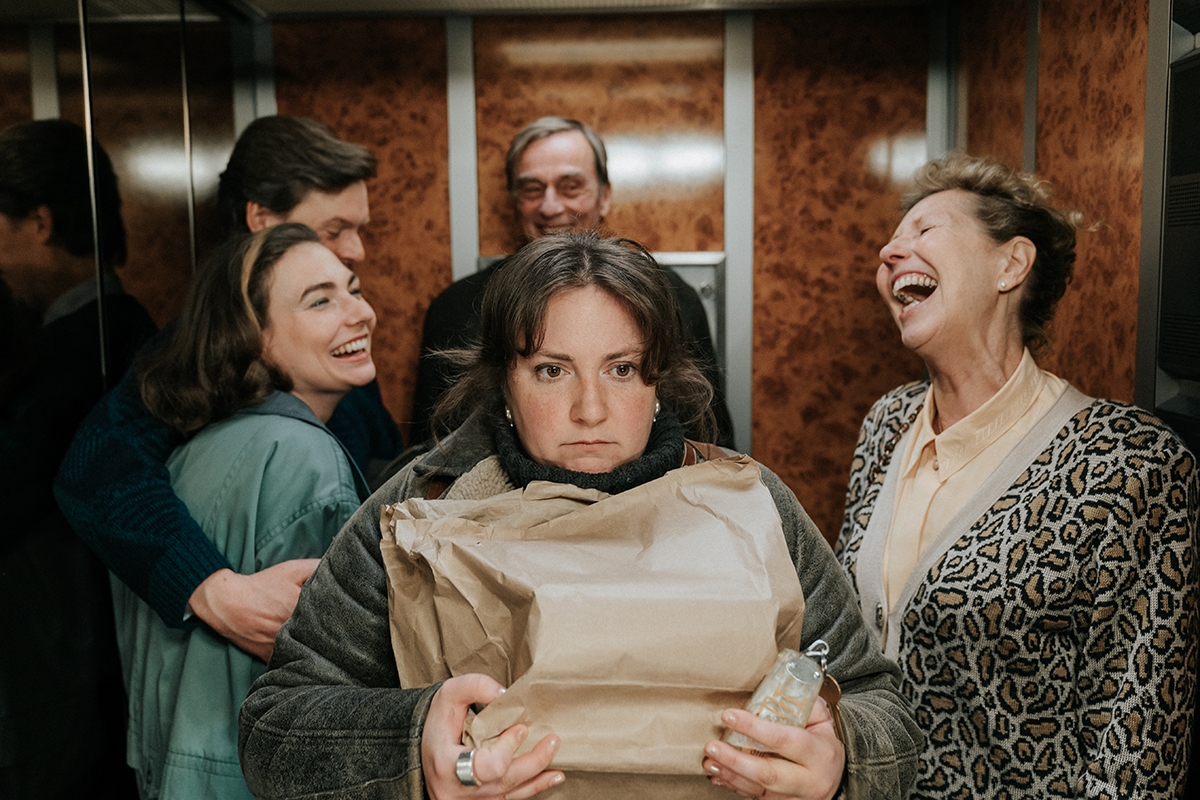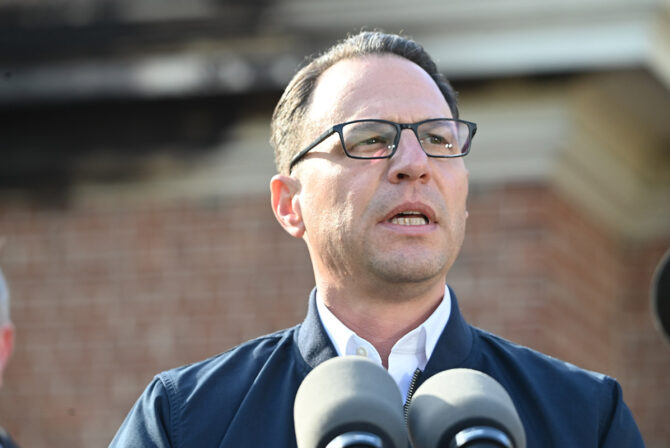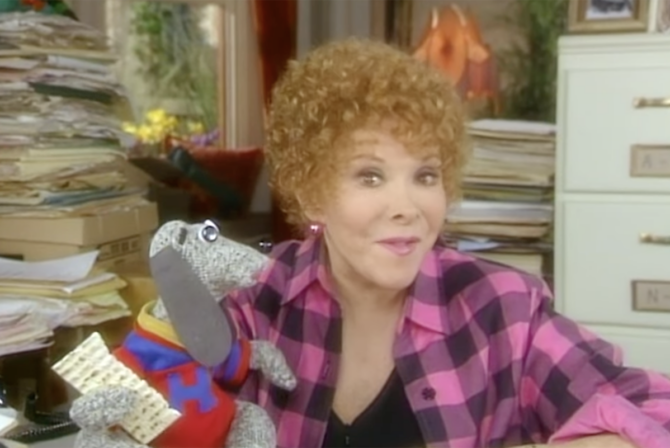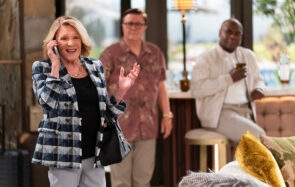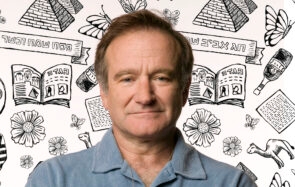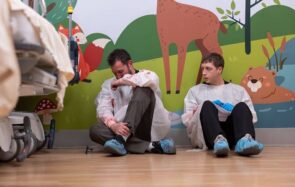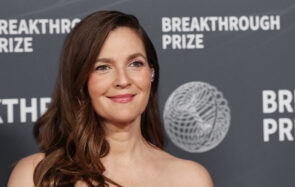It was Julia von Heinz’s mother who first gave her “Too Many Men” by Lily Brett, a book that left an indelible mark on the German director who has a personal connection to the Holocaust. Her grandfather, whose mother was Jewish, suffered greatly during the Holocaust. And like Lily Brett’s father, who provided inspiration for the father in “Too Many Men,” and subsequently the father played by Stephen Fry in von Heinz’s film adaptation called “Treasure,” he masked that suffering with jokes, with humor.
“Treasure,” the story of a father-daughter trip to Poland in the 1990s, starring Fry alongside Lena Dunham as journalist Ruth, a character much based on Brett herself, has been getting lukewarm reviews, but as someone who is third generation to the Holocaust, I was deeply moved by the different kind of Holocaust story that it tells, the way it shows both the trauma of survivors and their children, and the complex story of Polish Jewish identity and relations.
It’s hard not to compare this movie to another Poland trip film coming out this year: Jesse Eisenberg’s “A Real Pain,” a contemporary story about two cousins who travel to Poland to honor their survivor grandmother. That movie was made in collaboration with the Polish government, and with Polish funding, and even inspired Eisenberg, who directed and stars in the movie, to acquire Polish citizenship. By contrast, von Heinz couldn’t get “even one cent” from the Polish government, which maintains that stories must show Poles purely as victims or as heroes.
“Treasure” paints a more complicated and, at times, a less palatable image. Edek himself is undeniably Polish — he speaks either a Polish-tinged English or Polish in the movie — but it’s also clear that he doesn’t want to return to the land of his youth. He brings up the post-war Kielce massacre of 42 Jews who tried to return home as he quakes with fear and tries to get his daughter not to go back to the building he once called his home. He falls back on his humor and charm, which in turn surrounds him with an adoring and marvelous cast of Polish characters: a driver named Stefan (perhaps a more subtle version of Alex in “Everything Is Illuminated”) who brings them goodies from his wife, and two beautiful older women who seem to follow Ruth and Edek in all of their stops. There’s a sweet hotel worker named Tadeusz who helps Ruth on her journey as a guide, trying to get her family’s belongings back from the Polish family now settled in Edek’s old family home in Lodz. It’s that family that made the movie ineligible for Polish funding. They only allow Ruth and Edek in after they are bribed; they lie about having any belongings of the former owners; and they then do their best to extort Ruth of everything they can when it is discovered, at first by Edek when he is served tea out of his own grandmother’s china, that they still have possessions of her murdered relations.
Von Heinz did actually temper the portrayal of Polish people in the original text. “Lily wrote her book with a lot of anger,” she told Kveller in an interview over Zoom. “And we couldn’t bring all that anger to the screen, because we moved on since that. I think that art needs to build bridges and not destroy them. So we really tried to build complex human beings.”
“A lot of [the Polish characters] are just wonderful,” she continued. “But of course, the family, they did something wrong. They are difficult people but they are complex human beings. Who wouldn’t take the chance to earn money, if you have that opportunity once in your lifetime and you’re very poor? I think that’s quite human.” The movie also goes out of its way to show the profound poverty of post-Soviet Poland of the ’90s.
The inability to get any financial support from Poland made making the film more complicated, von Heinz says. “It needed to be a film made out of Poland,” she firmly believed, and yet they only had a few short days of shooting in the country and shot the rest of the movie in Germany, which funded the film.
“But we had the most beautiful Polish cast and crew members. So their perspective was very strong. They helped me with the script, helped me with everything,” she added. The film’s premiere in Krakow was an incredible moment for the filmmaker — with 350 young people in the Academy of Arts watching the film and a long Q&A that made von Heinz feel that their film was “100% embraced and accepted.”
Yet despite being a German-made movie, the movie did remove the book’s most prominent German character — the ghost of Auschwitz commander Rudolf Höss. It was a painful but needed choice, von Heinz says. “We kept him for some drafts, but it just didn’t work. It was only dialogue, which is so boring to watch. We decided to lose that element and to focus on the very core of the novel. It’s the father-daughter love story.”
As a German director, von Heinz said she knew that she can’t “come to Poland, point my finger and say you did wrong, when Germany did everything wrong. That’s why it was so important for me to really have the Polish perspective, and the Polish Jewish perspective.” She added, “On the other hand, you can’t get this film financed [from any country but] Germany. Because we have ‘memory culture,’ it’s in our law. We have the guilt complex. You know, people have to pay for these stories —which is good.”
Though von Heinz worries about how that tide is shifting.
“In Germany, it’s really in the law that money from the government should go to culture about memory, and this is mainly connected to the Holocaust,” von Heinz said. “Now, there is a new government, and they say, let’s not only focus on the Holocaust, let’s also have the fall of the [Berlin] wall and the immigrant story, which is totally right. But also, it gives me a little bit of fear that the singularity of this specific historic event is questioned,” von Heinz professed. “And also, of course, there are now voices who say, do we still need memory culture? Or does it justify other cruelties? Shouldn’t we get over it? And all of this scares me because: I have that grandfather — I know from all the letters and papers that were left, how much suffering there was only in my family. I want to use my work to work against that — use my art against that.”
Von Heinz does indeed bring the pain of the Holocaust to the fore, with Edek in Poland fighting hard to protect his daughter amid his rising fear and trauma. In a scene in Auschwitz (partly shot in visual effects for technical constraints, but that as a viewer seems seamless), Edek relives his harrowing time in the death camp. Yet perhaps the most haunting moment is a heart-to-heart between the father and daughter in a hotel restaurant, in which Ruth talks about what it was like to live with her late mother who survived the camps with Edek — her sternness, emotional unpredictability, the way she would wake up in the night screaming, the loneliness of a childhood in Auschwitz’s shadow. You see how growing up in a house where the specter of the Holocaust is always present shaped Ruth, leaving her with the echoes of an unbearable pain, day in and day out. It’s a portrayal of second generation trauma the likes of which I don’t think I’ve seen.
“I did research, and I can’t think of another movie about the second generation,” von Heinz surmised, “because it’s easily overseen. Because of course we know the first generation, the survivors, we have to honor them. It’s their trauma, their pain. And we didn’t know that transferring generational trauma even existed because that’s such a new term. When I read Lily Brett’s book — and she didn’t know about [generational trauma] in the mid-’90s — I felt such a deep connection to that complex female character, with all her thoughts and inner monologue. And I felt, I want to try to bring that to a movie, because it just didn’t exist.”
“It’s not only the Holocaust,” von Heinz added. “It’s every trans-generational trauma. It’s about [how] we can heal if we share, if parents and grandparents are able to share. Otherwise, it will continue and travel to the next generation, and the next, and the next.”
